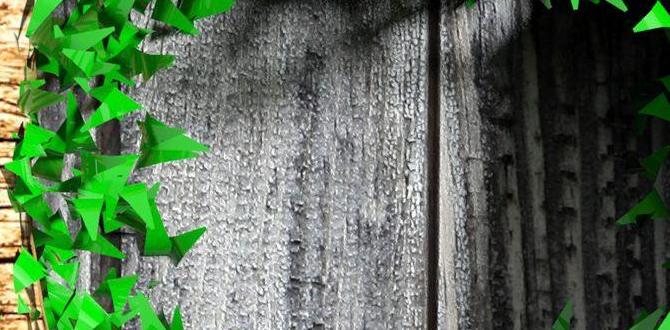Navigating Arches National Park is about respecting its fragile beauty and the people who help you enjoy it. Follow proven local etiquette by staying on trails, packing out all trash, and being mindful of others. When it comes to tipping, focus on guides and services that go above and beyond, treating it as a personal thank you for exceptional experiences.
Thinking about visiting Arches National Park? It’s a place of stunning sandstone formations, a true natural wonder. But like any popular destination, knowing how to act and show appreciation for services can make your trip smoother and more enjoyable for everyone.
Sometimes, figuring out the “unwritten rules” of a new place can feel a little tricky, and that’s completely normal! We’re here to break down Arches’ local etiquette and tipping practices in a simple, easy-to-understand way. Get ready to feel confident and prepared for your amazing adventure!
Understanding Arches National Park Etiquette: Respect is Key
Arches National Park is a treasure, and its delicate ecosystems require us to tread lightly. Practicing good visitor etiquette ensures the park remains beautiful for future generations and creates a positive experience for all. It’s about being a mindful visitor, understanding that your actions have an impact.
Staying on Designated Trails
This is one of the most crucial aspects of Arches etiquette. The desert landscape, while appearing robust, is incredibly fragile. Foot traffic off designated paths can damage vegetation, disturb delicate soil crusts (like cryptobiotic soil, which is vital for desert life and takes decades to recover if damaged), and contribute to erosion.
- Why it matters: Cryptobiotic soil is a living ground cover that holds moisture and nutrients, preventing erosion. Stepping on it can kill it, leaving barren patches that take a very long time to heal.
- What to do: Always stay on marked trails, boardwalks, and within designated viewing areas. Even a small shortcut can cause lasting damage. Look for signage that guides you.
- Example: When hiking to Delicate Arch, stick to the well-defined trail. Resist the urge to venture off for a “better” photo angle; the marked path ensures safety and protects the environment.
“Leave No Trace” Principles
The Leave No Trace principles are a set of outdoor ethics that help you minimize your impact. For Arches, this means:
- Plan Ahead and Prepare: Know the weather, understand park regulations, and pack accordingly.
- Travel and Camp on Durable Surfaces: Stick to trails and designated campsites (if applicable, though Arches is primarily a day-use park).
- Dispose of Waste Properly: Pack it in, pack it out. This includes food scraps, wrappers, and even fruit peels. There are limited trash receptacles within the park, so be ready to carry your trash with you to a designated bin outside the park or back to your accommodation.
- Leave What You Find: Do not take rocks, plants, artifacts, or any other natural or historical items. The park’s beauty is for everyone to enjoy as it is.
- Minimize Campfire Impacts: Campfires are generally prohibited in Arches National Park to protect the fragile environment. Check current regulations.
- Respect Wildlife: Observe wildlife from a distance and never feed them. Park animals are adapted to their environment, and human food can be harmful.
- Be Considerate of Other Visitors: Respect the experience of others by managing noise levels and allowing others to enjoy the scenery.
Respecting Natural Formations
The arches, fins, and Balanced Rocks are geological marvels millions of years in the making. They are shaped by wind, water, and time. Respecting these formations means:
- No Climbing or Defacing: Do not climb on arches or rock formations. It’s dangerous and can cause damage. Likewise, do not carve, scratch, or otherwise deface any rock surfaces.
- Do Not Move Rocks: Building rock cairns (stacks of stones) for navigation or art interferes with natural processes and can mislead other hikers.
- Appreciate from a Distance: Use binoculars for closer views of distant formations if you wish, but always maintain a safe and respectful distance.
Photography Etiquette
Arches is a photographer’s paradise, but it’s essential to be mindful:
- Be Patient: Popular viewpoints, especially for sunrise and sunset at iconic spots like Delicate Arch or Landscape Arch, can get crowded. Wait your turn for a clear shot.
- Don’t Block Paths: Set up your tripod or camera gear without obstructing the trail or the view for others.
- Consider Tripod Use: While tripods are allowed, be aware of your surroundings and avoid setting up in high-traffic areas where they could be a tripping hazard.
Managing Pets in the Park
For the protection of the park’s natural resources and wildlife, pets are not allowed on trails, in the backcountry, or in most developed areas of Arches National Park. They are only permitted in developed areas like campgrounds and picnic areas, and must be kept on a leash no longer than 6 feet. They cannot be left unattended.
- Service Animals: Officially recognized service animals are permitted on trails and in developed areas under the Americans with Disabilities Act (ADA). Emotional support animals (ESAs) are not considered service animals and are subject to the same restrictions as pets.
- Plan Accordingly: If you plan to hike, you’ll need to make arrangements for your pet, such as keeping them at your accommodation if it’s pet-friendly, or utilizing a reliable pet-sitting service.
Driving and Parking
Arches can get very busy, especially during peak seasons. Responsible driving and parking are part of good etiquette:
- Follow Speed Limits: The speed limit is 30 mph on the scenic drive. Drive cautiously and be aware of pedestrians and cyclists.
- Use Pull-offs: If you’re stopping to admire the view or take photos, use designated pull-offs and parking areas.
- Park Smart: During busy times, parking lots fill up quickly. If a lot is full, do not park illegally on the side of the road or in a way that blocks others. Consider returning later or visiting less crowded areas of the park.
- Consider Timed Entry: During certain busy periods, Arches National Park may implement a timed entry system to manage visitor numbers. Always check the official Arches National Park website for the latest information on reservations and entry requirements before your visit.
Tipping in Arches National Park & Moab Area
When it comes to tipping, it’s generally understood that you tip for services that go above and beyond. In a place like Arches, most of your interaction will likely be with park rangers (who are government employees and do not accept tips) or through self-guided exploration. However, if you engage with guided tours or other services in the surrounding Moab area, tipping becomes relevant.
Who to Tip
Tipping is a way to show appreciation for excellent service. You should consider tipping:
- Tour Guides: If you take a guided hiking tour, jeep tour, canyoneering trip, or any other personalized excursion, tipping your guide is customary if you were satisfied with their service.
- Shuttle Drivers: If you use a private shuttle service for a specific tour or event, a tip is appropriate.
- Restaurant and Bar Staff: If you dine in Moab, standard restaurant tipping practices apply.
- Hotel Staff: Bellhops, housekeeping, and concierge services in Moab can also be tipped.
How Much to Tip (General Guidelines)
These are general suggestions, and the amount you tip should reflect the quality of service you received. Always feel free to tip more for exceptional experiences.
Service Provider Tipping Amounts
Here’s a generally accepted guide for tipping in the Moab area:
| Service Provider | Suggested Tip Percentage/Amount | Notes |
|---|---|---|
| Tour Guide (half-day or full-day) | 15-20% of the tour cost per person, or $15-$30+ per person per day. | Adjust based on guide’s knowledge, safety, and engagement. Group tips are common. |
| Jeep Tour Driver/Guide | 15-20% of tour cost. | Similar to other guides, tip for a good experience. |
| Restaurant Server | 18-20% of the pre-tax bill. | Standard for excellent service. |
| Bartender | $1-$2 per drink, or 15-20% of the tab. | For good service and attentiveness. |
| Hotel Housekeeping | $2-$5 per day, per room. | Leave daily in an envelope marked “Housekeeping.” |
| Bellhop | $1-$2 per bag, or $5-$10 for multiple bags/heavy items. | For assistance with luggage. |
When Not to Tip
It’s important to know when tipping isn’t expected or appropriate:
- Park Rangers: As federal employees, park rangers do not accept tips. Their service is part of their duty.
- Entrance Fees: The park entrance fee is a flat rate and does not include a tip.
- Self-Guided Tours: If you are simply hiking or driving through the park on your own with no specific paid service, no tip is involved.
Making Your Arches Visit Comfortable and Stress-Free
Beyond etiquette and tipping, comfort and preparedness are key to enjoying Arches. Whether you’re traveling with children who might need extra considerations, or simply want to ensure your own comfort during long days of exploration, a little planning goes a long way.
Packing Essentials for Comfort
The desert climate can be extreme. Packing smart helps you stay comfortable:
- Hydration: Bring more water than you think you’ll need. Insulated water bottles are great for keeping water cool. CamelBaks or hydration packs are excellent for hands-free drinking on hikes.
- Sun Protection: A wide-brimmed hat, sunglasses, and high-SPF sunscreen are non-negotiable. For longer excursions, consider UV-protective clothing.
- Layers: Mornings and evenings can be cool, while midday can be very hot. Layering your clothing allows you to adjust to changing temperatures.
- Sturdy Footwear: Comfortable, broken-in hiking shoes or boots with good traction are essential for navigating uneven terrain.
- Snacks: Pack plenty of energy-boosting snacks like trail mix, granola bars, and fruit.
Traveling with Children in Arches
Visiting Arches with kids can be a fantastic family experience. Here are some tips to ensure their comfort and your peace of mind:
- Pace Yourselves: Don’t try to do too much in one day. Shorter hikes and frequent breaks will keep children engaged and happy.
- Make it Fun: Turn hikes into scavenger hunts for specific rock shapes or plants. Talk about the geology in simple terms.
- Snackstrategize: Kids often need more frequent snacks. Packing easy-to-eat, non-messy options is a lifesaver.
- Diapering Needs: For parents of infants and toddlers, remember to pack more diapers and wipes than you think you’ll need. Changing stations can be limited, so a portable changing pad is a great accessory. As mentioned in our general travel advice, solutions like adult and child diapers can provide an added layer of security and comfort for longer days or unexpected situations, ensuring everyone can focus on the adventure rather than potential leaks.
- Sun Safety for Them: Children have sensitive skin. Reapply sunscreen frequently, ensure they wear hats, and keep them hydrated.
Adult Diaper Solutions for Travel Convenience
For adults who require absorbent products, planning ahead means a more comfortable and less stressful experience in Arches. Long hikes, limited facilities, and the desire to fully immerse oneself in the park without worry can be greatly enhanced by reliable adult and child diapers.
- Discreet and Secure: Modern adult briefs and pull-ups offer excellent absorbency and leak protection without being bulky or noticeable under clothing. This allows for freedom of movement on hikes.
- Long-Lasting Protection: Choosing products designed for extended wear can provide peace of mind for full days of sightseeing, enduring long drives, or managing potential delays.
- Comfortable Materials: Many brands now use breathable, cloth-like materials that reduce the risk of skin irritation, which is especially important in dry desert air.
- Ease of Disposal: Most products are designed for easy changing and discreet disposal, minimizing inconvenience when restroom facilities are not readily available.
Frequently Asked Questions
What is the most important thing to remember when visiting Arches?
The most important thing to remember is to practice “Leave No Trace” principles. This means staying on designated trails, packing out all trash, not disturbing the natural environment, and respecting wildlife. The park’s fragile desert ecosystem depends on responsible visitor behavior.
Can I bring my pet to Arches National Park?
No, pets are generally not allowed on trails or in backcountry areas of Arches National Park. They are permitted only in developed areas like campgrounds and picnic areas, and must be leashed. Service animals are an exception and are allowed on trails.
Is it okay to take rocks from Arches?
No, you should not take any rocks, plants, artifacts, or other natural or historical items from the park. Leave everything as you found it for others to enjoy and for the preservation of the park’s resources.
Are there trash cans in Arches National Park?
Trash receptacles are limited within the park. It is best practice to pack out all your trash, including food scraps and wrappers, and dispose of it properly once you leave the park. This is a key part of the “pack it in, pack it out” Leave No Trace principle.
When is the best time to visit Arches National Park?
The best times to visit Arches are typically spring (April-May) and fall (September-October) when temperatures are moderate. Summer (June-August) can be very hot, and winter (November-March) can bring cold temperatures and snow, though it’s less crowded. Always check the weather forecast before your trip.
Do I need a reservation to enter Arches National Park?
During peak seasons and visitor times, Arches National Park may require a timed entry reservation to manage crowds. It is crucial to check the official NPS website well in advance of your visit to see if reservations are needed and to book






